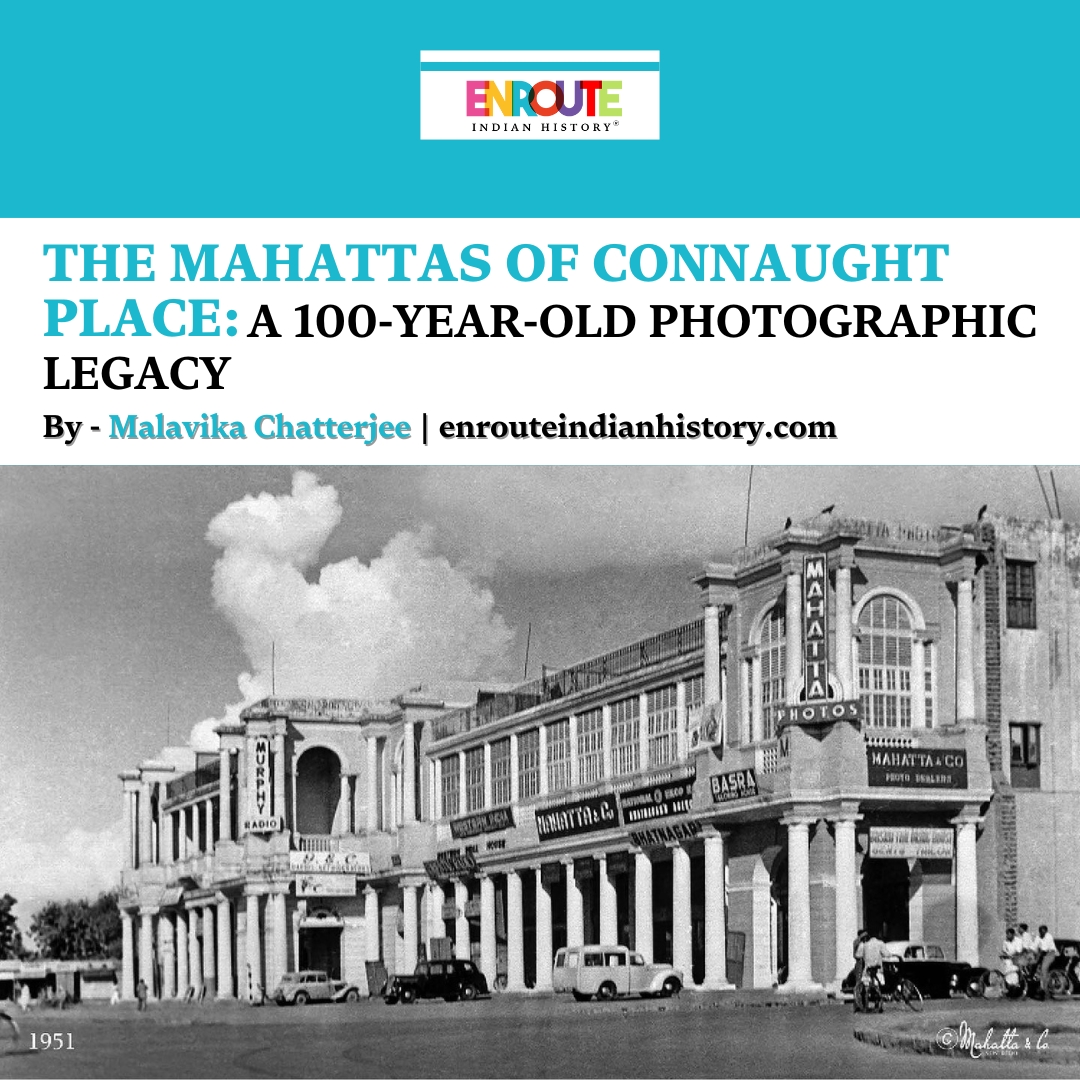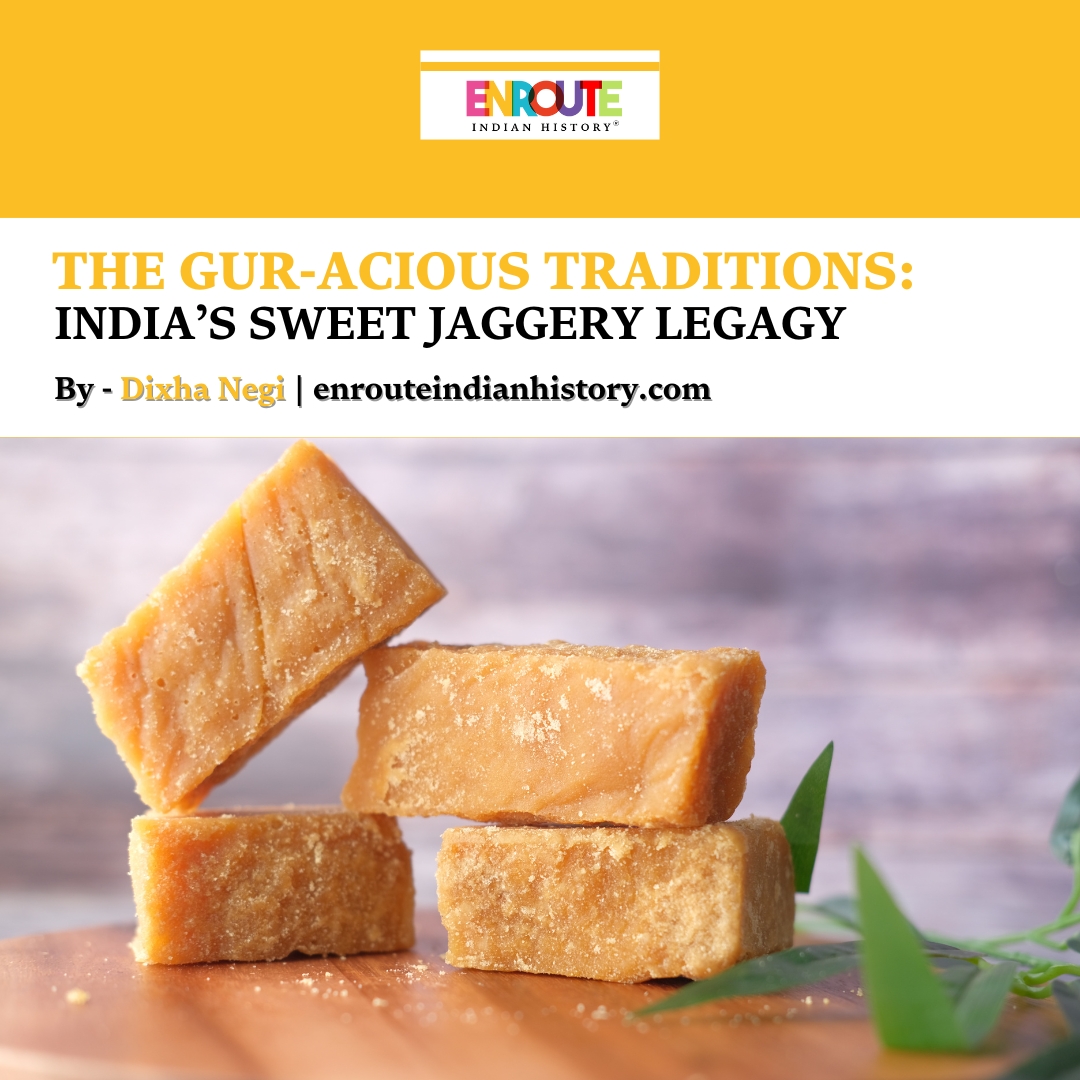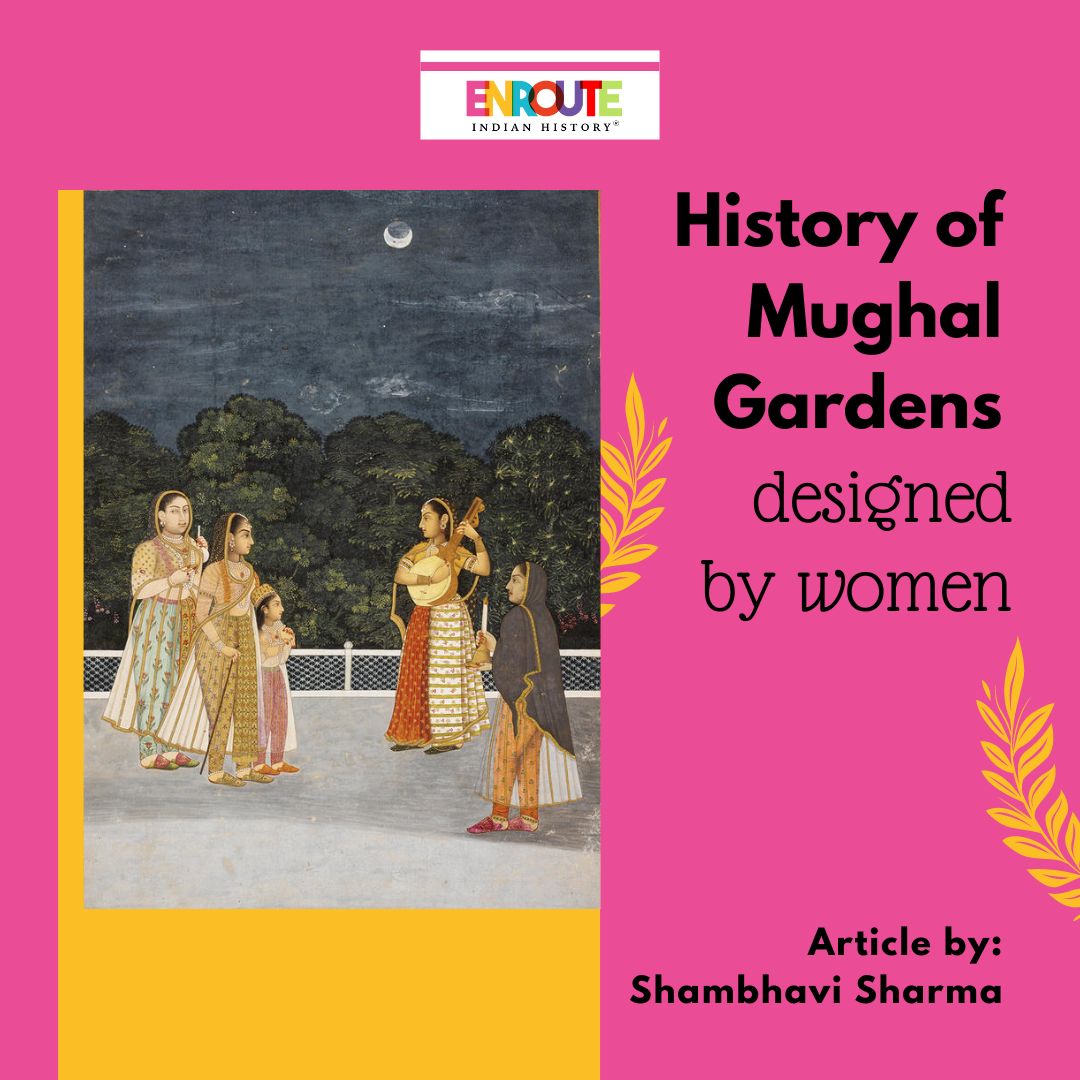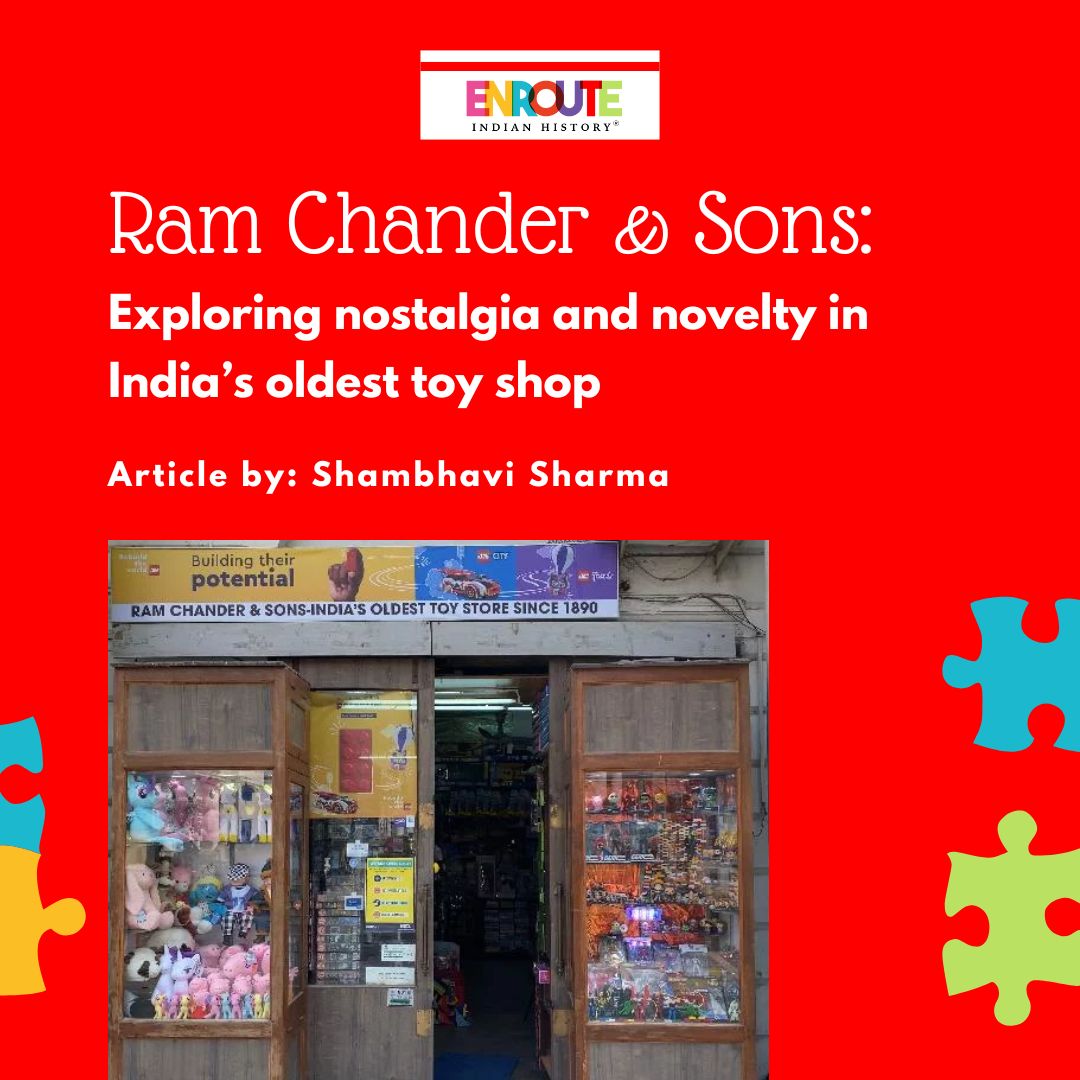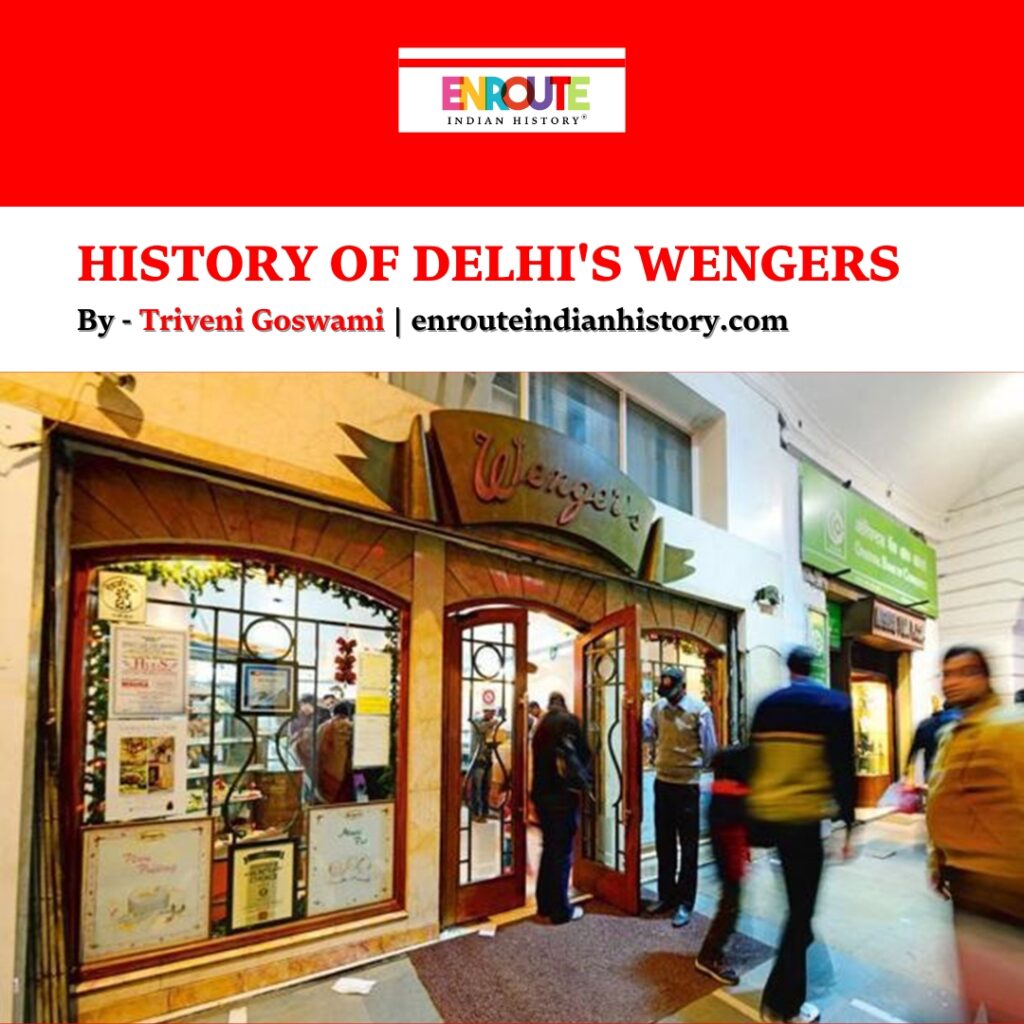
To begin the story of Wenger’s is to recollect a time of colonial rule where the homesick and nostalgic Europeans yearned to have some flavour of their homeland in India. In 1883, Mambally Bapu from Thalassery set up the Royal Biscuit Bakery. This marked the beginning of India’s Western Bakery shops, with Bapu who was also called Baputti, leading the forefront with India’s first European cakes. Baputti, who was also a tea, sugar and milk merchant, knew his ingredients well and baked some of the finest cookies. Indeed, the first cake in India was a blend of Indian ingredients against western ones. For example, rather than using Brandy Baputti used a local alcoholic drink, transforming the cake from a Western entitled food item to a local Indian delicacy. He catered mostly to a colonial clientele.

An illustration with the Royal Biscuit Factory in the background. Source: tell my story
Alongside the art of bakery, the British brought tea to us. The colonial enterprise of the tea was accompanied by the elite space of the tearoom. The concept of Tearooms gained importance in the Victorian Era, Britain. Victorian literature is a testament of the popularity of tearooms as a space where the elite would interact, network and even gossip. Pictures of tearooms in India that survive today, suggest the exclusivity of the space and the colonial grandeur of the concept.

Tearoom in Bangalore, 1900. Source: past-india.com
History of Wenger’s pre-independence
Almost two decades after India’s first bakery shop was opened, New Delhi saw the birth of its favourite bakery. In 1926, Wenger’s opened as a tearoom and confectionery shop. The space was the definition of European grandeur and class, demonstrating fine architectural vision. Designed by the British architect, Sir Robert Tor Russel, Wenger became an instant hit. However, it was initially inaugurated at the Kashmere Gate. It was in 1933 that the shop shifted to Connaught Place and has stayed there ever since. It is believed that before its inauguration in 1933, the shop was already well known, and many bookings were made in advance.

Picture of Wenger’s Fine Dining. Source: Wall Street Journal
The popularity of the shop, back then, was probably due to the Swiss couple who opened the shop, whose name was Wenger’s. They brought to India Swiss chocolates, French breads and Magarine cakes. They would however move their bakery to Shimla during the summers, as was the tradition of the British back then. In its heyday, Wenger’s was a bustling place of social activities. Young couples got married, aristocrats met over tea and official dinners were organised. The couple remained in charge of the bakery up until 1945.

A Wedding celebration with Mr. Wenger at right. Source: Wall Street Journal
Wenger’s post-independence
1945, the dawning year of Indian Independence, means a lot to historians who constantly go back to the year to dig up important political and historical truths. However, in the calmer space of Wenger’s, an important milestone took place. The Swiss couple decided to sell their famous bakery to Mr B.M Tandon. B.M Tandon worked in Wenger’s as their general manager. He showed promise to the couple. They felt they could pass on their legacy in the hands of someone who knew the business in great detail. The current proprietor of Wenger’s is the grandson of Mr Tandon.
In 2011, Wall Street Journal did an extensive reporting on Wenger’s. It noted that with the expansion of dining options in Connaught Place post-Independence, the grandeur of Wenger’s declined. The space of the extensive bakery reduced with time. Following Independence, the massive ballroom had lost much of its allure and was no longer cost effective. In the 1960s, Wenger’s began catering. Their clientele were dignitaries, including foreign embassies, Indian diplomats, and even the President’s office, which routinely purchased Indian sweets, Swiss chocolates, and pastries. After the restaurant closed in 1979, Wenger’s became one of Connaught Place’s smaller shops. Today, Wenger’s is managed by Charanjeet Singh, who has been the manager since 1965.
Wenger’s today
Today, when we look back at Wenger’s, what do we see? Is it a colonial enterprise that could not survive its grandeur post-independence? Is it remains of colonial India’s nostalgic love for bakery? To me, Wenger’s is important for many reasons. For one thing, Wenger’s is an entity brought to us by Europeans but run by Indians. While it might not be “grand” as it once was, what point is grandeur if it cannot reach the common people? In Delhi, Wenger’s has not just been any bakery. Wenger’s has a history of preparing reasonably priced good quality food. The post-colonial Delhi has adapted Wenger’s as its own. Wenger’s is important because it has made the space accessible to common folks. The long queues that people wait in are a testimony to Wenger’s success post-independence, because it is a proof that people have invested more time and memories in Wenger’s than they invested money, a sign of reversing the exclusiveness that Wenger’s was renowned for in its pre-independence stage.
If you are a Delhiite, in the true sense of the term, you will have indulged yourself in their delicious and famous Danishes, pastries, tarts, their choices of Swiss rolls; alongside an equally variant savoury collection with some of the best patties and quiches. Wenger’s delivers taste, memories, and a history of its own.

A present-day picture of Wenger’s. Source: Mint
References
Delicious story behind Wenger’s popularity. (2015, May 27). Deccan Herald. https://www.deccanherald.com/india/karnataka/bengaluru/delicious-story-behind-wengers-popularity-2130044
Rana, P. (2011, December 21). Wenger’s: New Delhi’s Oldest Bakery. Wall Street Journal. https://www.wsj.com/articles/BL-IRTB-13793
Wenger’s: The story of Delhi’s oldest bakery; know about the Tandon family who are running the legacy business. (2023, August 19). The Financial Express. Retrieved September 16, 2024, from https://www.financialexpress.com/life/lifestyle-wengers-the-story-of-delhis-oldest-bakery-know-about-the-tandon-family-who-are-running-the-legacy-business-3213705
- September 27, 2024
- 5 Min Read
- August 18, 2023
- 9 Min Read


